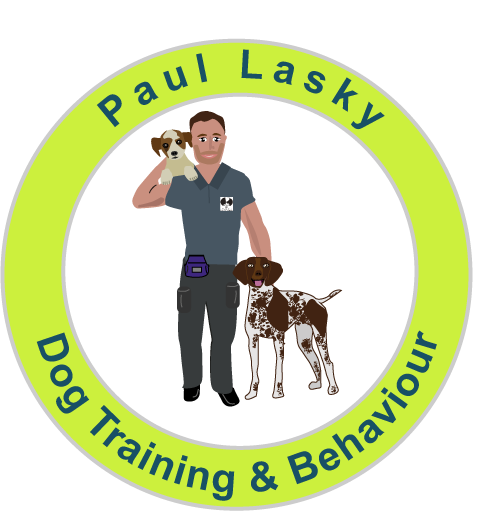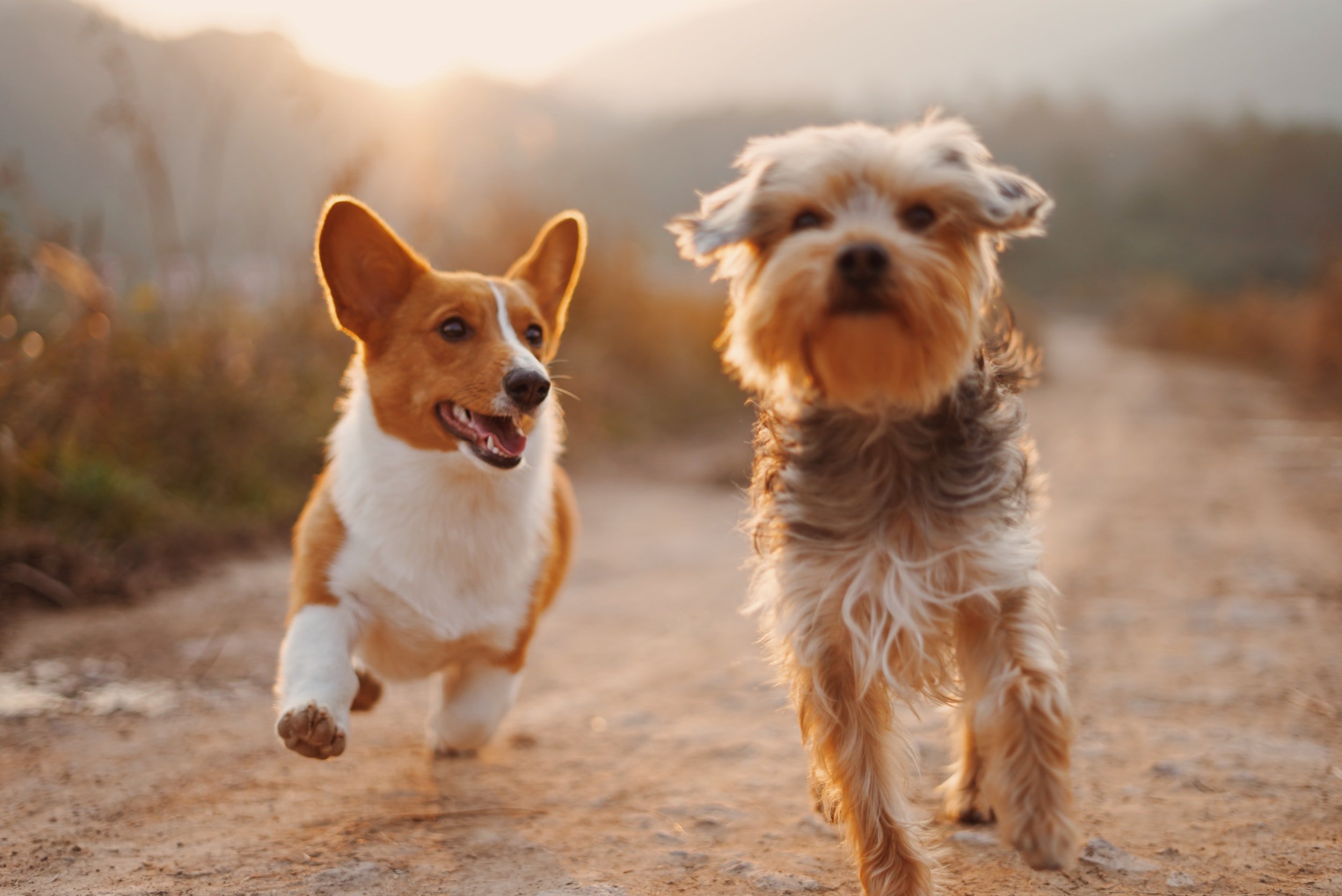What to do when other dogs are around – A Beginners Guide
Dog to dog interactions can be a great source of stress for some owners and their dogs. There are a variety of situations where this may occur. The situations detailed in this article are not exhaustive but cover most of the common scenarios. If you feel your dog could actually bite another dog or has bitten another dog please refer to Training Versus Behaviour guide and call for a behaviour appointment.
On the street / On lead
Dogs naturally greet each other in a dance of bum sniffs, bows, semi circles, approaches, retreats, appeasements and tail wags. Dogs marching head on toward each other on a narrow pavement removes the opportunity to carry out these natural greeting behaviours. It forces the dogs to meet head on and the dogs are on lead so feel even more restricted. This is a sure fire way to end up in a dog fight. I have split it into two safe scenarios below.
Scenario 1. Communicate with the owner. Do not be embarrassed. Embarrassment is the enemy here and lack of communication with other dog owners is a big cause of dog fights. Have a set phrase ready such as “will your dog say hello?”. If the owner confirms the dogs can say hello then loosen your lead so your dog doesn't feel restricted. Allow the dogs to sniff each other for no longer than a few seconds then be on your way. Position your body past the other owner and their dog so when you decide to move on you are ready to move and your dog has to follow. Use a cue like “Fido this way”. Reward your dog for following. Practice your “this way” cue when dogs are not around too. Remember to only say hello for a few seconds in a confined space, the dogs dwelling face to face for extended periods can cause discomfort so either start walking together in the same directions (see parallel walking below) or go your separate ways.
Scenario 2. If you already know your dog is challenged by face to face street or on lead interactions with other dogs simply cross the road before you get too close and before your dog is reacting. Use your “this way” cue to jovially take your dog away from the path of the other dog and reward your do for doing so. To avoid the other dog is not a failure and it is not embarrassing. It is very empowering for your dog to know he has an escape route and will condition your dog to know other dogs mean good things will happen. The good things being food reward and he gets to move away from the thing he is anxious about. Over time he will begin to see the sight of other dogs as a good thing. And remember if you already know your dog is reactive; then to drift aimlessly toward the other dog with no plan in mind except to hope your dog “behaves this time” is a HIGH RISK, ZERO REWARD strategy and is a sure fire way to end up in a dog fight and increase your dogs anxiety around other dogs.
At the park / Off lead
If your dog has a good recall you might be going off lead at the park. This is only advised if you have the confidence to let your dog interact with other dogs and do not add nervous energy to the equation or tell your dog off.
Be positive and gently praise your dog for good behaviour such as play bows and coming away from the other dog for a breather.
When it is time to go home do not split the dogs up while they are locked in play wait for a natural break and call your dog away gently and praise when they come.
Arranged interactions with a friends dog / selected dog
OK, so you have identified your dog is fearful or reactive around other dogs. A good way to get your dog on the ladder at least is to select a calm non reactive dog for your dog to parallel walk with. Maybe a friends dog, maybe a local trainers dog. A parallel walk is exactly as it sounds. Walk the dogs in the same direction alongside each other with a safe distance in between. It is best done in an open field with no other dogs around and lots of natural sights and smells to keep the dogs occupied. At various points, if it is going well you can edge closer together and let the dogs have a brief sniff before breaking again for more parallel walking.
The advantage of a calm non reactive dog is that the reactive dog can learn that being in the presence of another dog doesn't have to be a high pressure situation where something is required of him. Often this gives the reactive dog the confidence and time to muster up a hello sniff.
Summary Points
Be vigilant and assess early if this will be a situation your dog will be anxious of. Watch ahead into the distance for other dogs.
If it is an impending high risk low benefit situation then move away from the other dog and praise and reward
If you have decided this is a situation where your dog will be able to say hello then have a set goal in mind. This could be as simple as one bum sniff then move away positively. Remember less is more. Always aim slightly under your dog's tolerance level. Never push it. Once you feel your dog has achieved one thing new end the session jovially and move away.
If your dog is scared when the dog approaches it, but interested and moves towards the dog when the other dog moves away (in a kind of push pull rhythm) then your dog is scared but interested and could come round eventually. This is commonly how puppies greet new dogs initially. This requires a calm polite dog to coax the fearful dog out of its shell. It will not work if the other dog is constantly moving forward to the fearful dog.
On lead meetings must be with less tension on the lead. This is not always possible if your dog pulls but at the moment your dog stops to say hello your lead must be loose so your dog doesn't feel the tension on the lead.
If you are uncomfortable then move away with your dog and praise and reward. Your dog will pick up on your nervous energy down the lead or through your voice tone and body language.
Be gently jolly. Your dog needs to see other dogs as a good thing. Communicate with other dog owners.
Your dog is allowed to tell off another dog if the other dog is being inappropriate. Don't punish your dog for grumbling or growling at a dog who is being pushy or in their face. If the other dog doesn't listen to your dog grumble then its time to move away with your “this way” command as the other dog has insufficient social skills for this to be a beneficial situation for your dog. Conversely, if your dog is pushy and over the top it is your responsibility to take him away if he is upsetting other dogs.
If you are ready for an rewarding journey to help your dog with me, please go to my services pages. Either for 1-1 behaviour training, A Walk in the Park Reactive programme or 1-1 dog training, I look forward to helping you. Send questions via text or WhatsApp and I will always respond within a day or two maximum.



